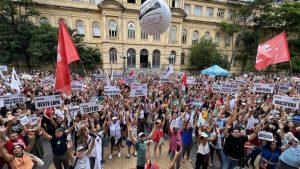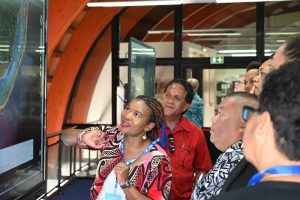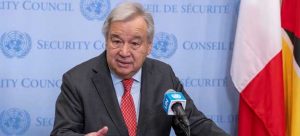FAIRFAX, Va., April 15, 2024 (GLOBE NEWSWIRE) — Winners in the 18th annual Stevie® Awards for Sales & Customer Service, recognized as the world's top customer service awards and sales awards, were unveiled on Friday night at a gala ceremony in Las Vegas, Nevada USA, attended by more than 400 executives from around the world.
The complete list of Stevie Winners by category is available at http://www.StevieAwards.com/Sales.
The 10 most–honored organizations in the 2024 Stevie Awards for Sales & Customer Service received Grand (“best in show”) Stevie Award trophies. Nominees were not able to apply for Grand Stevie Awards directly. Winners were determined by a points system based on the total number of awards won, as well as having the highest average score in selected categories.
DP DHL Worldwide, with 13 Gold, 18 Silver, and 14 Bronze Stevie Award wins, was the most honored organization this year, earning the top Grand Stevie Award trophy. In descending order, the organizations below were presented with Grand Stevie Award trophies in the 2024 Stevie Awards for Sales & Customer Service on behalf of themselves and/or clients. There was a ninth–place tie between Toco Warranty and Purpol Marketing Limited.
- DP DHL (Worldwide), 96 points
- IBM (Armonk, NY USA), 64 points
- Support Services Group, Inc. (Waco, TX USA), 49 points
- Allianz Services Pvt Ltd (Trivandrum, Kerala, India), 39 points
- Sales Partnerships, Inc. (Broomfield, CO USA), 38.5 points
- UPMC Health Plan (Pittsburgh, PA USA), 31 points
- Blackhawk Network (Pleasanton, CA USA), 26 points
- VIZIO Inc. (Irvine, CA USA), 22 points
- Toco Warranty ( Los Angeles, CA USA), 19 points
Purpol Marketing Limited (Chippenham, United Kingdom), 19 points
Other notable winners with three Gold Stevie Awards include Alight Solutions (Lincolnshire, IL USA), Optum (Eden Prairie, MN USA), and WNS (Holdings) Limited (Mumbai, India).
Organizations winning a combination of five or more Gold, Silver, or Bronze Stevie Awards include TransPerfect Translations, New York, NY USA (eight), VMWare (Broadcom) Palo Alto, CA USA (seven), Intuit, Toronto, Canada (seven), Avetta, Lehi, UT USA (seven), SAP, Worldwide (seven), ValueSelling Associates, Inc., Carlsbad, CA USA (six), Element Electronics, Winnsboro, SC USA (six), Voya Financial, New York, NY USA (six), CivicPlus, Manhattan, KS USA (five), Capital Rx, New York, NY USA (five), Datasite, Minneapolis, MN USA (five), Inspiro, Makati City, Philippines (five), Loveholidays, London, UK (five), OpenGov, San Francisco, CA USA (five), QNB Finansbank, Istanbul, Turkey (five), and Qualitest Group, Bridgewater, NJ USA (five).
More than 2,300 nominations from organizations of all sizes and in virtually every industry were evaluated in this year’s competition. Winners were determined by the average scores of more than 200 professionals worldwide in seven specialized judging committees.
Entries were considered in more than 60 categories for customer service and contact center achievements, including Contact Center of the Year, Award for Innovation in Customer Service, and Customer Service Department of the Year; 60 categories for sales and business development achievements, ranging from Sales Director of the Year to Sales Training Practice of the Year, and Achievement in Sales Automation; and categories to recognize new products and services and solution providers, among others.
Winners in one special category, the Sales Partnerships Ethics in Sales Award, were also announced and recognized at the April 12 ceremony. This award recognizes organizations for best practices and achievements in demonstrating the highest ethical standards in the sales industry. Integrity Solutions of Nashville, TN USA is the Gold Stevie winner in this category. The Silver winners are Better Way Health (Kennesaw, GA USA), Stateside Affairs (Manasquan, NJ USA), and Desiderate (New South Wales, Australia). Bronze Stevie winners are Alright Retiree Health Solutions (Chicago, IL USA), Belkins (Dover, DE USA), Rootstack (Panama), Shell International Aviation (Makati, Philippines), TCN (St. George, UT USA), and Yuksekbilgili Egitim & Danismanli (Istanbul, Turkey).
Winners of the 2024 People's Choice Stevie® Awards for Favorite Customer Service, announced on April 4, were also honored at the April 12 awards gala. People’s Choice Stevie Award winners receive the coveted crystal People's Choice Stevie Award, which is determined by a worldwide public vote.
The presentations were broadcast live via Vimeo and are available to watch online.
Nominations for the 2025 edition of the Stevie Awards for Sales & Customer Service will be accepted starting this July. The entry kit may be requested at http://www.StevieAwards.com/Sales.
About the Stevie Awards
Stevie Awards are conferred in nine programs: the Asia–Pacific Stevie Awards, the German Stevie Awards, the Middle East & North Africa Stevie Awards, The American Business Awards®, The International Business Awards®, the Stevie Awards for Great Employers, the Stevie Awards for Women in Business, the Stevie Awards for Sales & Customer Service, and the new Stevie Awards for Technology Excellence. Stevie Awards competitions receive more than 12,000 entries annually from organizations in more than 70 nations. Honoring organizations of all types and sizes and the people behind them, the Stevies recognize outstanding performances in the workplace worldwide. Learn more about the Stevie Awards at http://www.StevieAwards.com.
Sponsors of the 18th annual Stevie Awards for Sales & Customer Service include Sales Partnerships, Inc. Support Services Group, Inc., and ValueSelling Associates, Inc.
Media Contact:
Nina Moore
+1 (703) 547–8389
Nina@StevieAwards.com
A photo accompanying this announcement is available at https://www.globenewswire.com/NewsRoom/AttachmentNg/e0520bf9–f814–4189–9d3f–b3a1f8a31877

GLOBENEWSWIRE (Distribution ID 9089907)




 Read more »
Read more »

